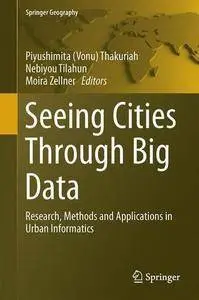Seeing Cities Through Big Data: Research, Methods and Applications in Urban Informatics
Springer | Geography | Nov. 08 2016 | ISBN-10: 331940900X | 559 pages | pdf | 15.11 mb
Springer | Geography | Nov. 08 2016 | ISBN-10: 331940900X | 559 pages | pdf | 15.11 mb
Editors: Thakuriah, Piyushimita (Vonu), Tilahun, Nebiyou, Zellner, Moira (Eds.)
There is limited published work on the state of the art of the use of Big Data for urban research; this book fills that gap by presenting novel ways of using Big Data for urban informatics
This book brings together experts from multidisciplinary fields and provides the state of the art in the different aspects of using Big Data in urban applications
Incorporates research into major data quality issues, frameworks, metrics and methods to be used for data quality assessment and also discusses fundamental limitations in Big Data-based urban social science research
Discusses novel ways of using Big Data towards planning and management of urban areas to meet sustainability, resilience, and intelligent resource utilization goals
Provides insight into how Big Data resources are being used to get a more fine-grained understanding of urban processes and dynamics, with the goal of developing theories or hypothesis to stimulate future empirical research
This book introduces the latest thinking on the use of Big Data in the context of urban systems, including research and insights on human behavior, urban dynamics, resource use, sustainability and spatial disparities, where it promises improved planning, management and governance in the urban sectors (e.g., transportation, energy, smart cities, crime, housing, urban and regional economies, public health, public engagement, urban governance and political systems), as well as Big Data’s utility in decision-making, and development of indicators to monitor economic and social activity, and for urban sustainability, transparency, livability, social inclusion, place-making, accessibility and resilience.



